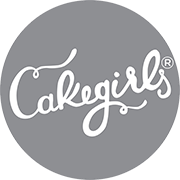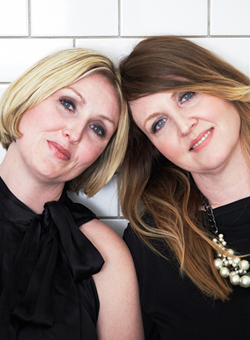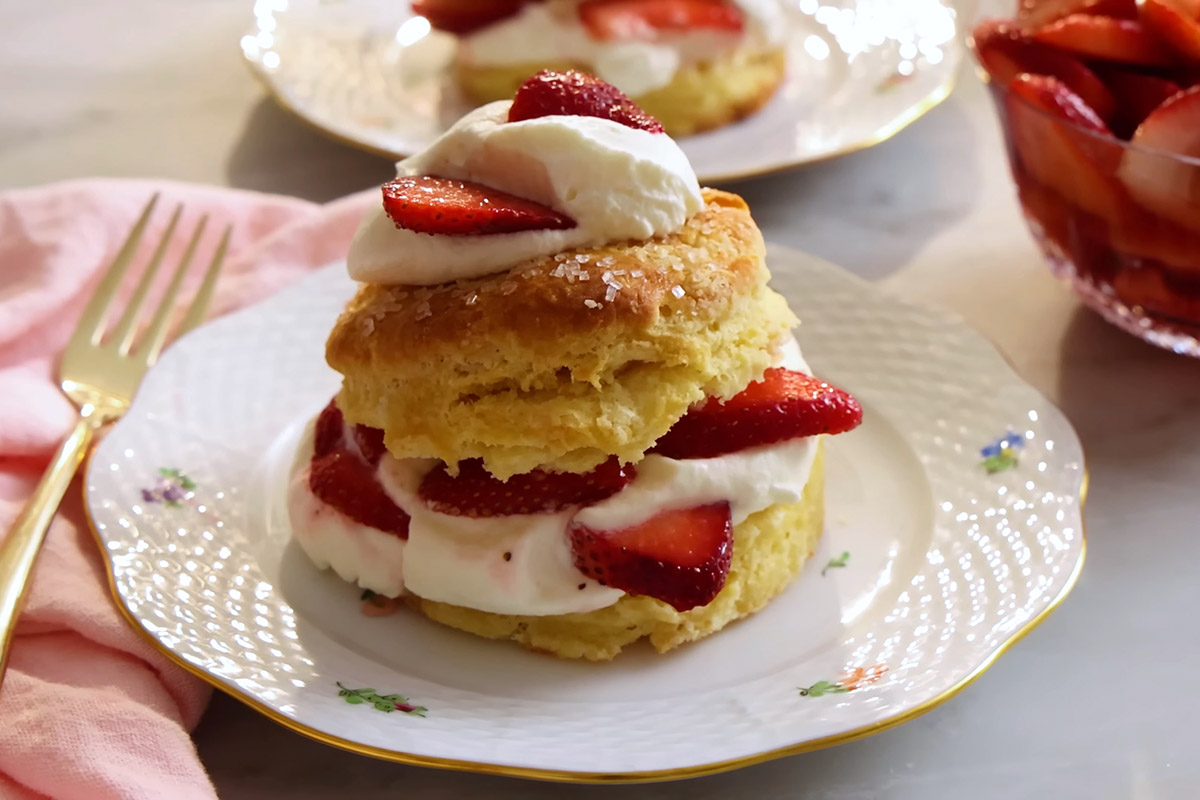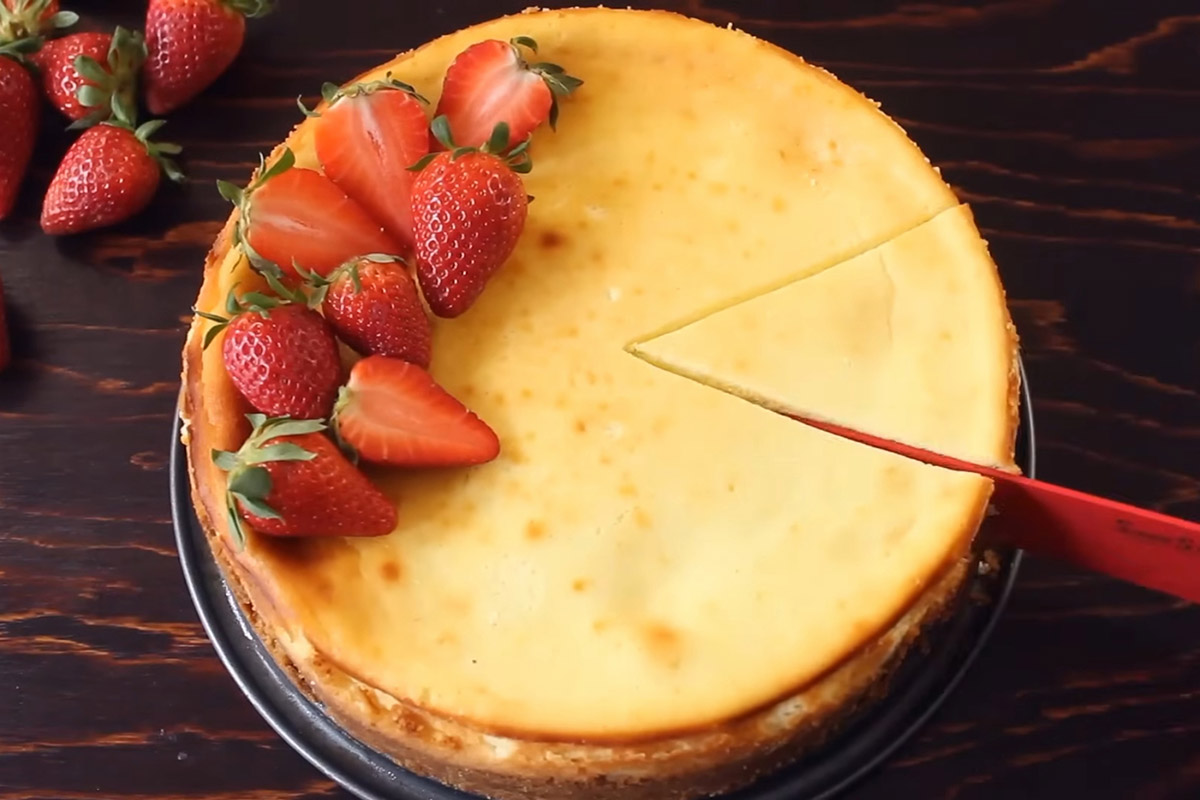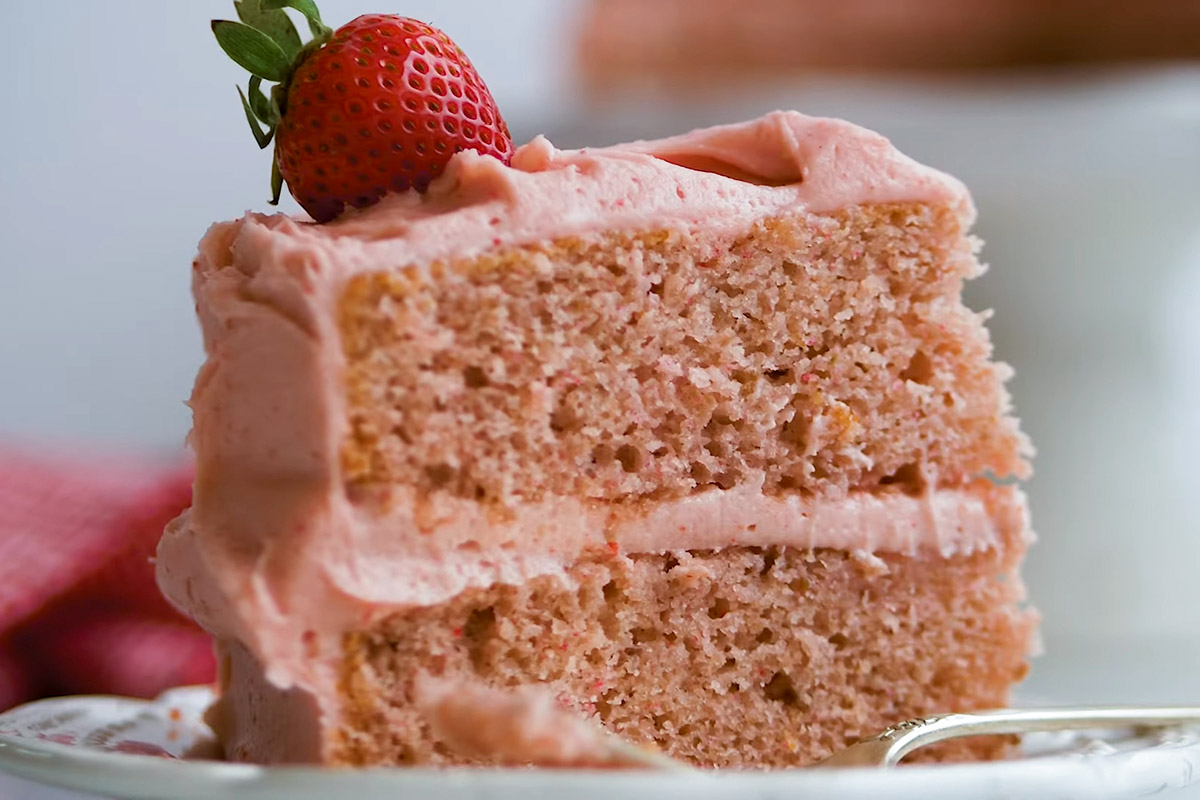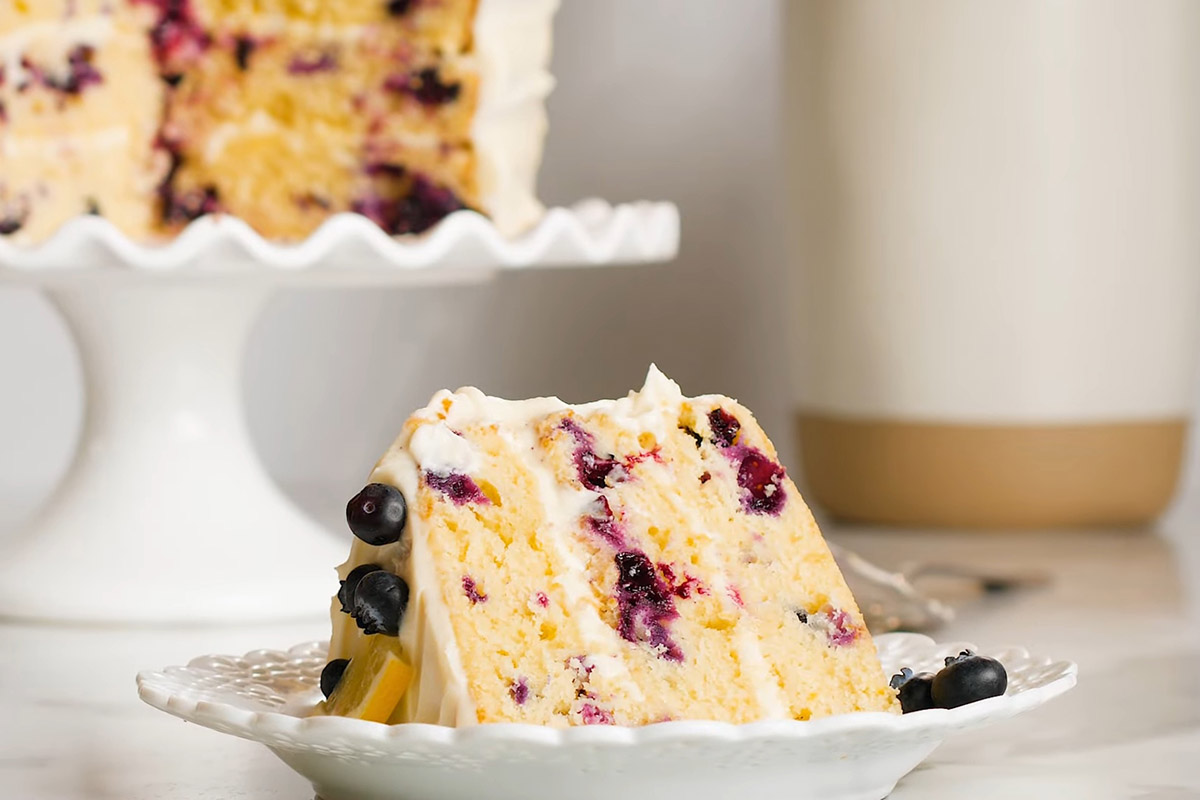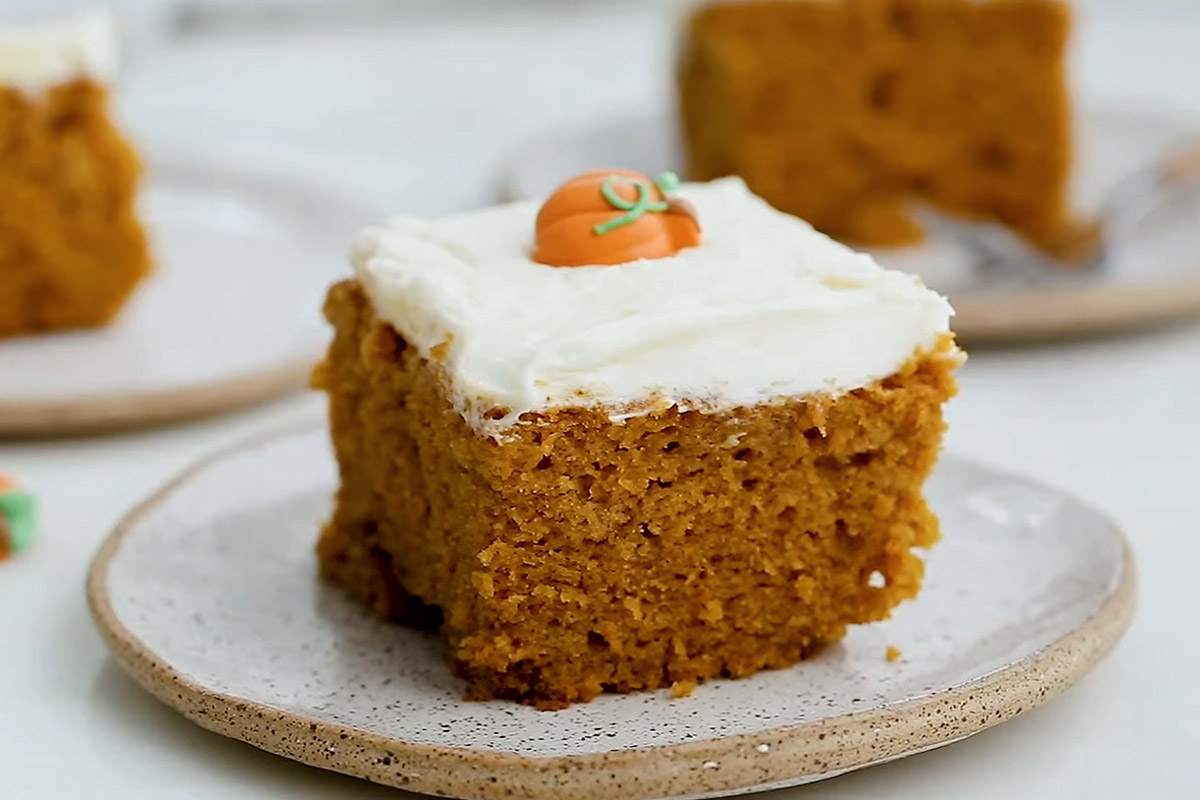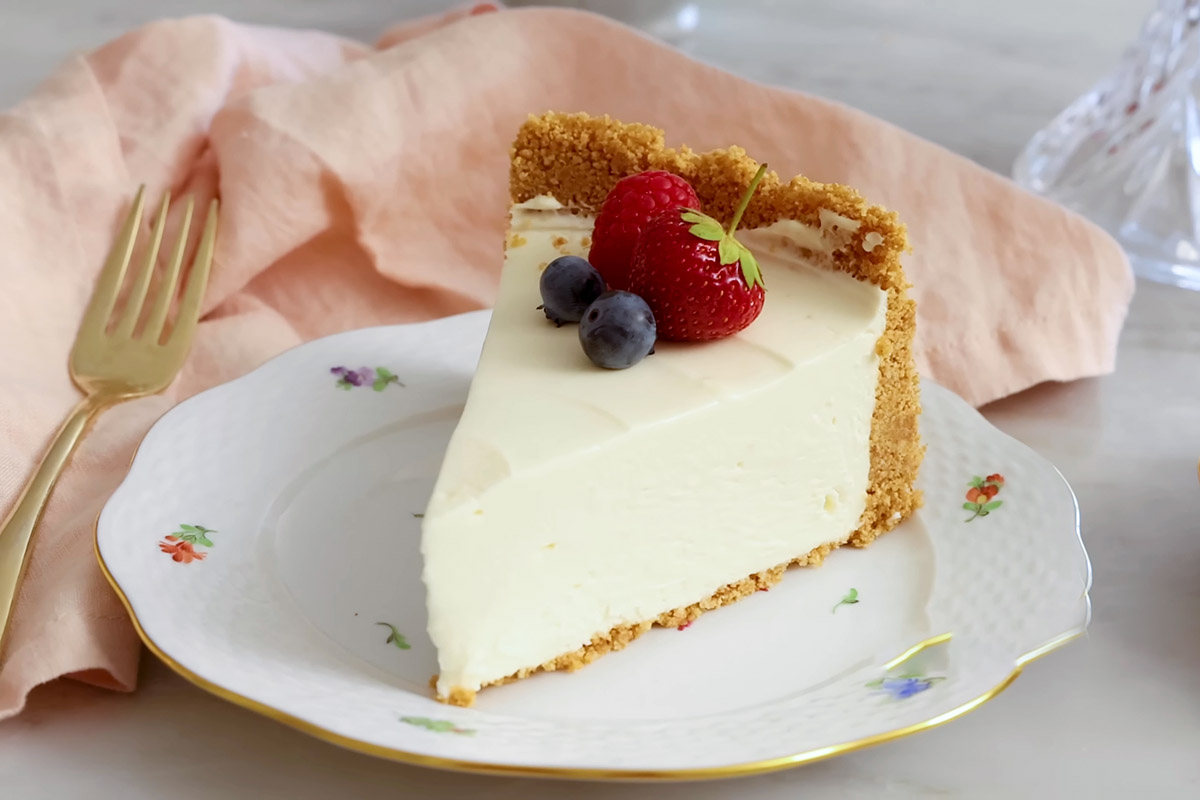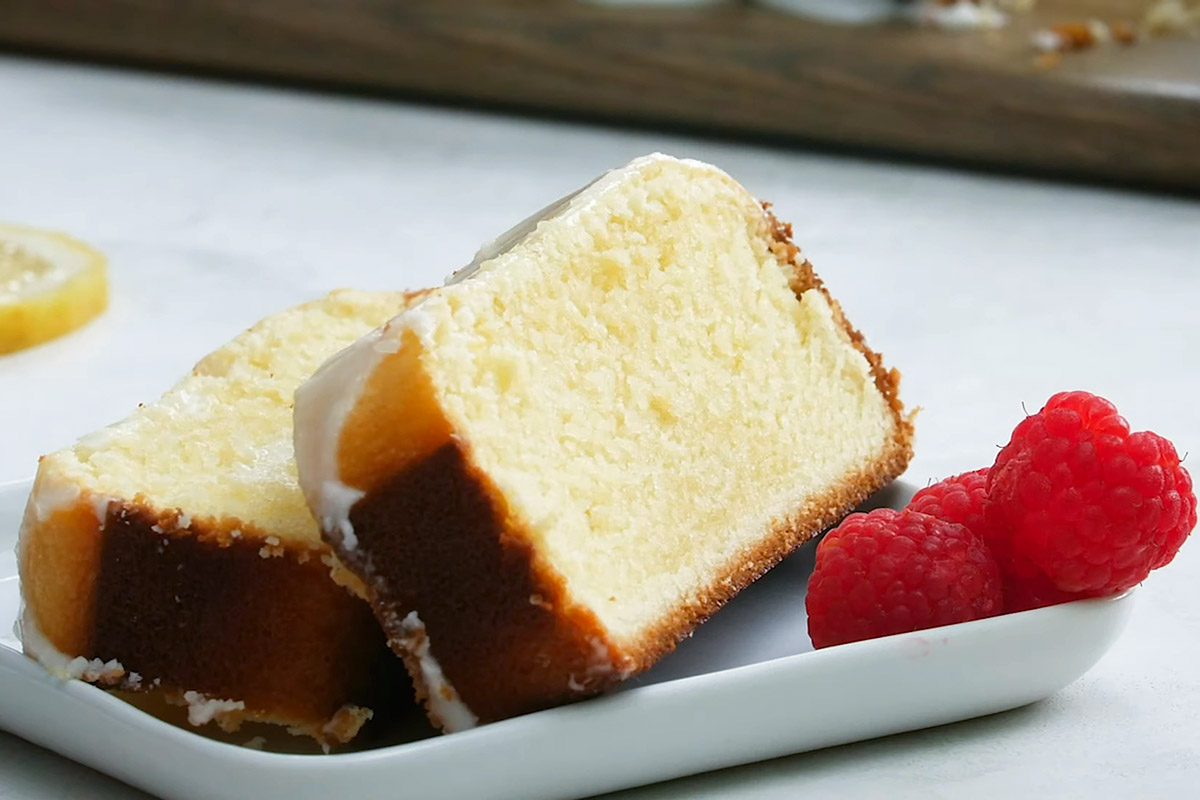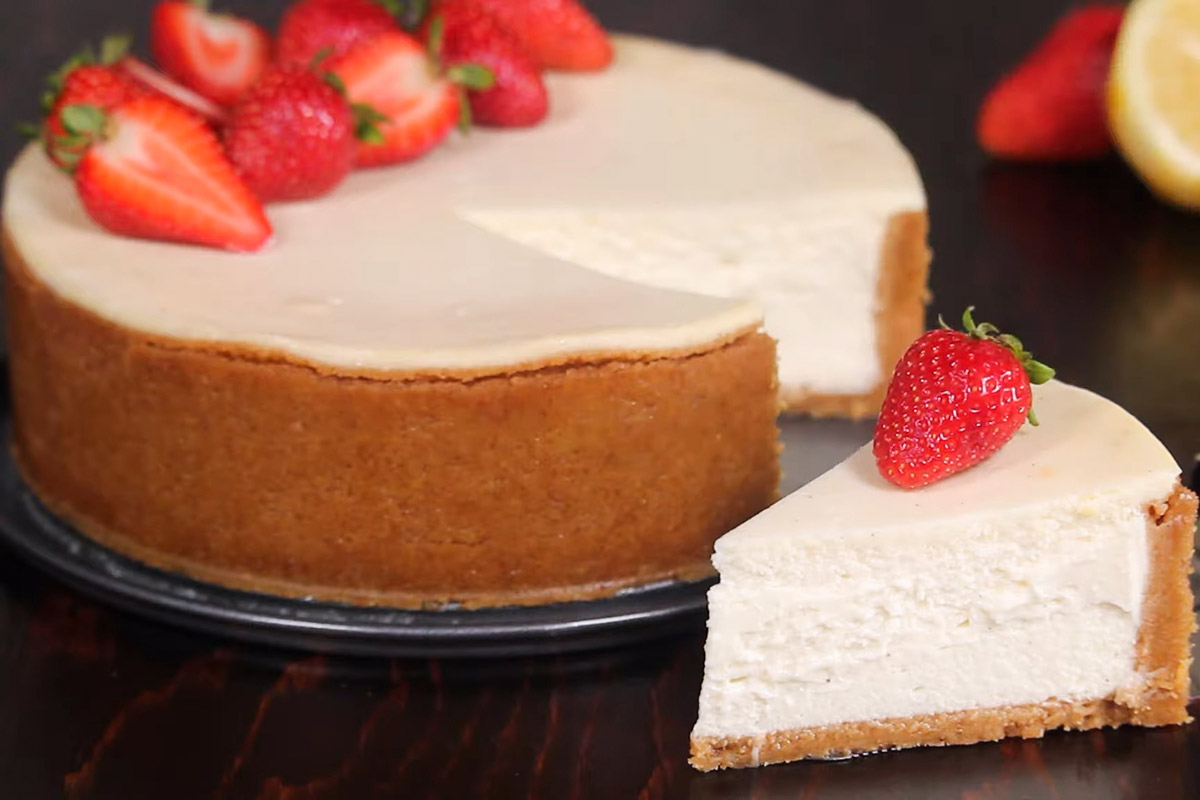Vanilla cake is a classic dessert that never goes out of style. In my bakery, we take great pride in it, which has been perfected over years of experimentation and countless taste tests. From the perfectly golden crust to the moist, tender crumb, every bite is a celebration of vanilla’s rich, comforting essence.
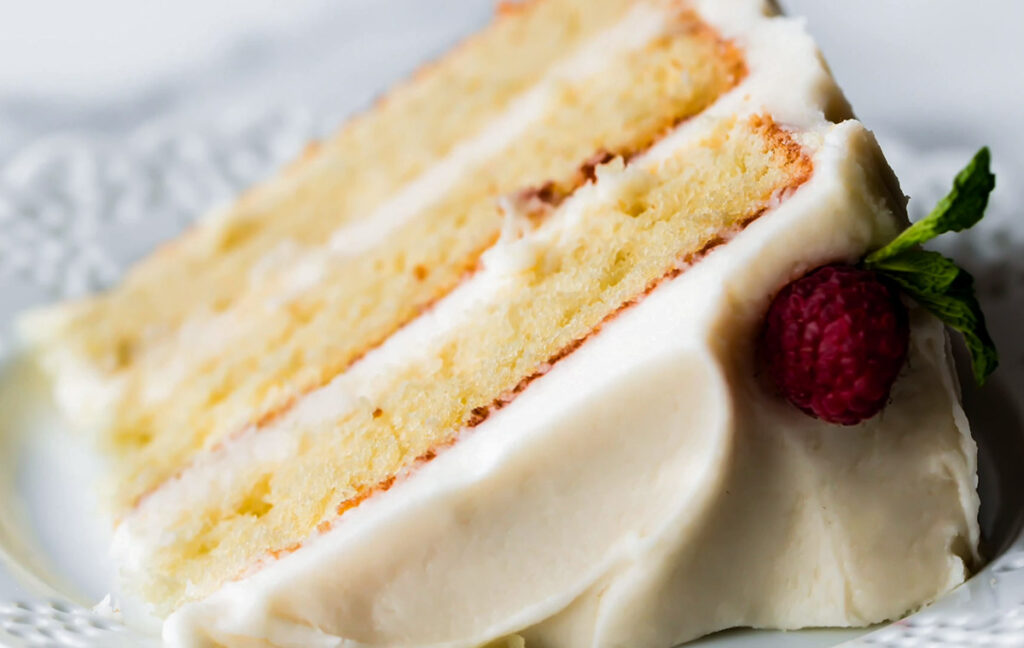
Let’s dive into this homemade recipe for vanilla cake together. I’ll share all the tips and tricks I’ve learned along the way to help you create a vanilla cake that’s truly unforgettable.
Why You’ll Adore This Vanilla Cake Recipe
There are so many reasons why I believe you’ll absolutely stick with this triple chocolate mousse cake recipe after this:
- Classic flavor: The taste of this basic vanilla cake is special—pure, unadulterated. This cake is a no-nonsense choice when it comes to delivering that rich, classic vanilla flavor that melts in your mouth.
- Comforting aroma: The moment you start baking this cake, your kitchen transforms into a haven of comfort. The soothing aroma of vanilla wafting through the air is enough to lift anyone’s spirits. It’s the scent of home, sweet home.
- Simplicity: What I absolutely adore about this recipe is its straightforwardness. You don’t need to be a pro baker or have fancy gadgets to make this vanilla cake from scratch.
- Easy customization: Here’s where you can let your creativity shine. This vanilla cake serves as a perfect canvas for your favorite frostings, fruit toppings, or even a sprinkle of edible flowers for those extra special occasions. The possibilities are endless.
- Celebratory staple: Whether it’s a birthday or an anniversary, this vanilla cake never disappoints.
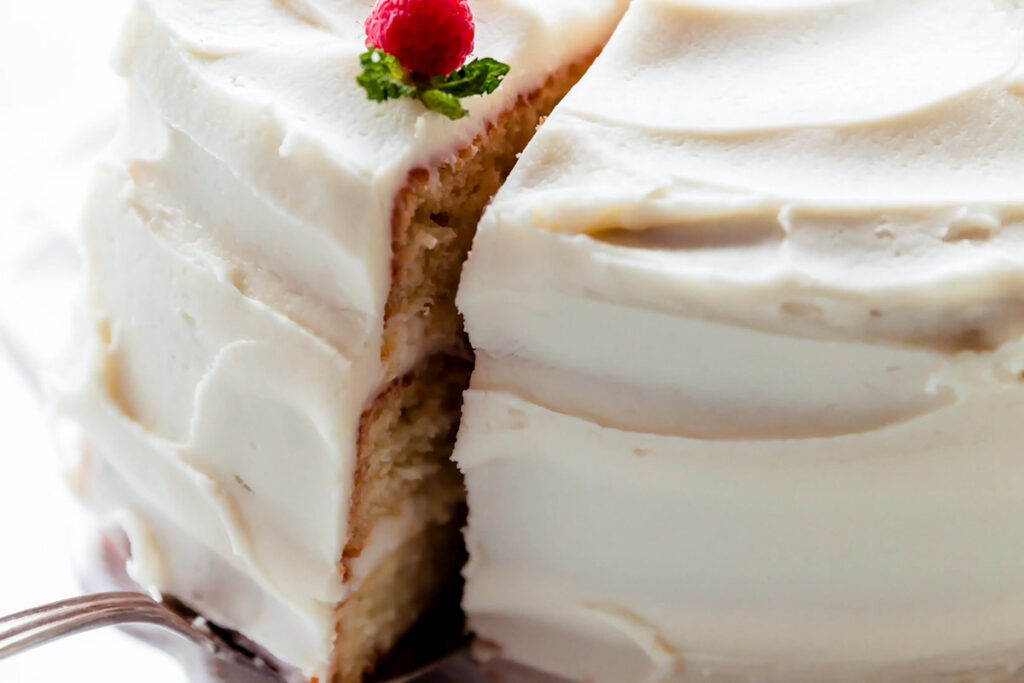
How To Make Vanilla Cake
Ingredients
Here’s what you’ll need, broken down into digestible bits, with personal tips from my experience:
Base
- Cake flour (3 ⅔ cups): The go-to for a cloud-like, soft texture. Trust me, this makes a difference. All-purpose flour just doesn’t deliver the same fluffiness and might weigh down your cake.
- Salt (1 teaspoon): Just enough to balance the sweetness.
- Baking powder (2 teaspoons): This is our leavening agent, but be careful not to go overboard – too much can give off a bitter taste.
- Baking soda (¾ teaspoon)
- Unsalted butter (1 and ½ cups), softened: Essential for a smooth, creamy texture. Make sure it’s room temperature to avoid lumps.
- Granulated sugar (2 cups)
- Eggs (3 large) + Egg Whites (2 additional): The eggs offer richness, while the egg whites keep it airy. Don’t swap for more whole eggs – it’s not the same.
- Pure vanilla extract (1 tablespoon)
- Buttermilk (1 and ½ cups), at room temperature: Not just for moisture. It also reacts with baking soda to make the cake tender and well-risen.
- Unsalted butter (1 and ½ cups), softened: Base of our creamy frosting. Again, make sure it’s soft to avoid any clumping.
- Confectioners’ sugar (Powdered sugar) (5 and ½ cups)
- Whole milk or Heavy cream (⅓ cup): Either work. This thins out the frosting to spreadable perfection.
- Pure vanilla extract (1 and ½ teaspoons)
- Salt (⅛ teaspoon): Just a pinch to enhance all the flavors in your frosting.
Instructions
1. Start by cranking up the oven to 350°F (177°C). Grease three 9-inch cake pans, then line them with parchment paper rounds and give the parchment a quick grease, too.
2. Whisk together your baking soda, baking powder, cake flour, and salt in another bowl. Put it aside for now.
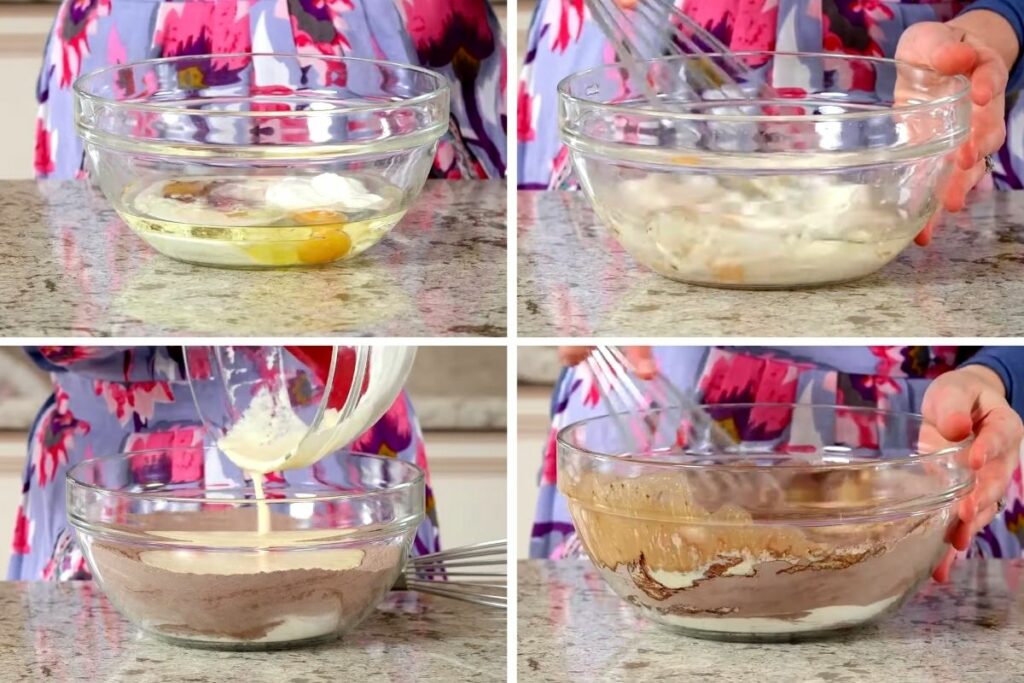
3. Grab your mixer and beat the sugar and butter on high speed until they’re smooth and creamy, which usually takes about 3 minutes. Don’t forget to scrape down the sides and bottom of the bowl occasionally so that everything mixes evenly.
4. Keep the mixer running and add in the 3 whole eggs, 2 egg whites, and a splash of vanilla extract. Whip these up on high speed until everything’s nicely combined, even though it might look a bit curdled. It’s supposed to look that way!
5. Turn your mixer down to low and slowly add the dry ingredients you set aside earlier, just until they’re combined. Pour in the buttermilk and keep it at a low speed. Mix just until everything’s nicely blended. You might want to give it a final stir by hand with a whisk to catch any sneaky lumps hiding at the bottom.
6. Divide your batter evenly between the prepared pans. You can weigh them to make sure they’re even if you want precision. Bake these for about 25 minutes. Let them sit in their pans on a wire rack until they’re completely cool.
7. While the cakes are cooling, take on the frosting. Beat the butter in a large bowl until it’s creamy, which takes around 2 minutes. Add in confectioners’ sugar, milk, vanilla extract, and a pinch of salt.
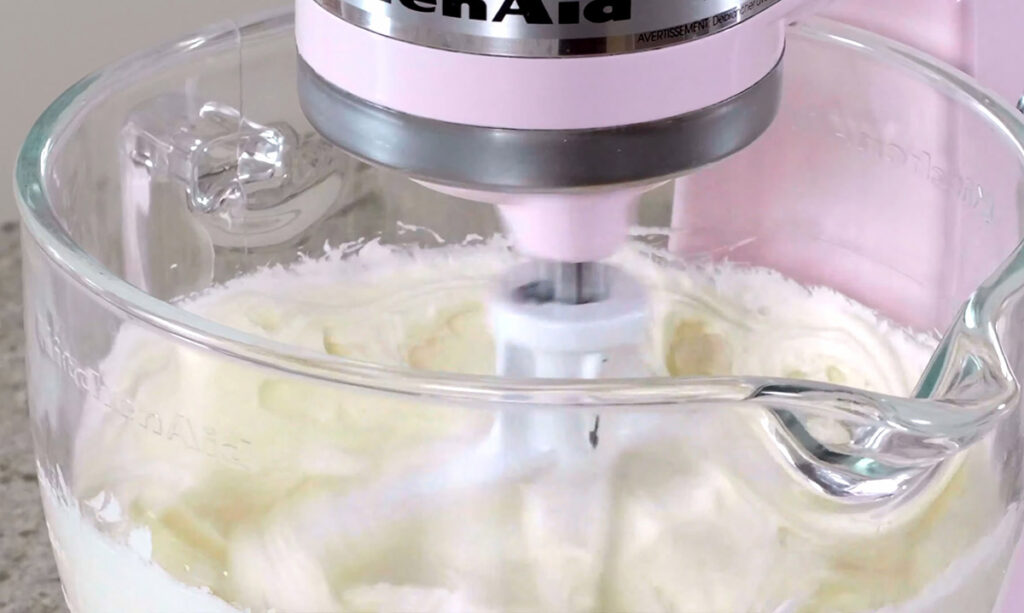
Start your mixer on low, then ramp up to high speed, beating for another 2 minutes. Adjust the consistency with extra milk or sugar if needed. If it’s too sweet, another pinch of salt can balance it out. You can learn more about the frosting here.
8. Even out the cake layers by slicing off the tops with a serrated knife to create flat surfaces. Spread a generous amount of frosting on the first layer, add the second layer, repeat, then cap it off with the third layer.
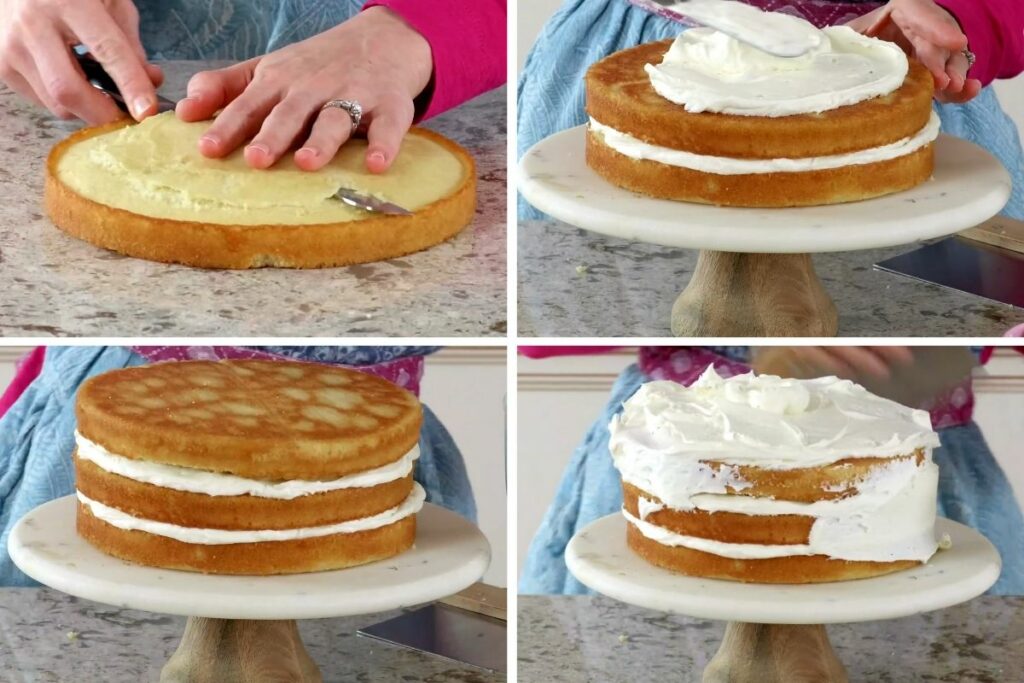
Use an icing spatula to spread the remaining frosting all over the top and sides. For a smooth finish, keep your spatula warm by dipping it in hot water.
9. Pop the assembled cake in the fridge for at least an hour to firm up. This makes slicing much cleaner and easier.
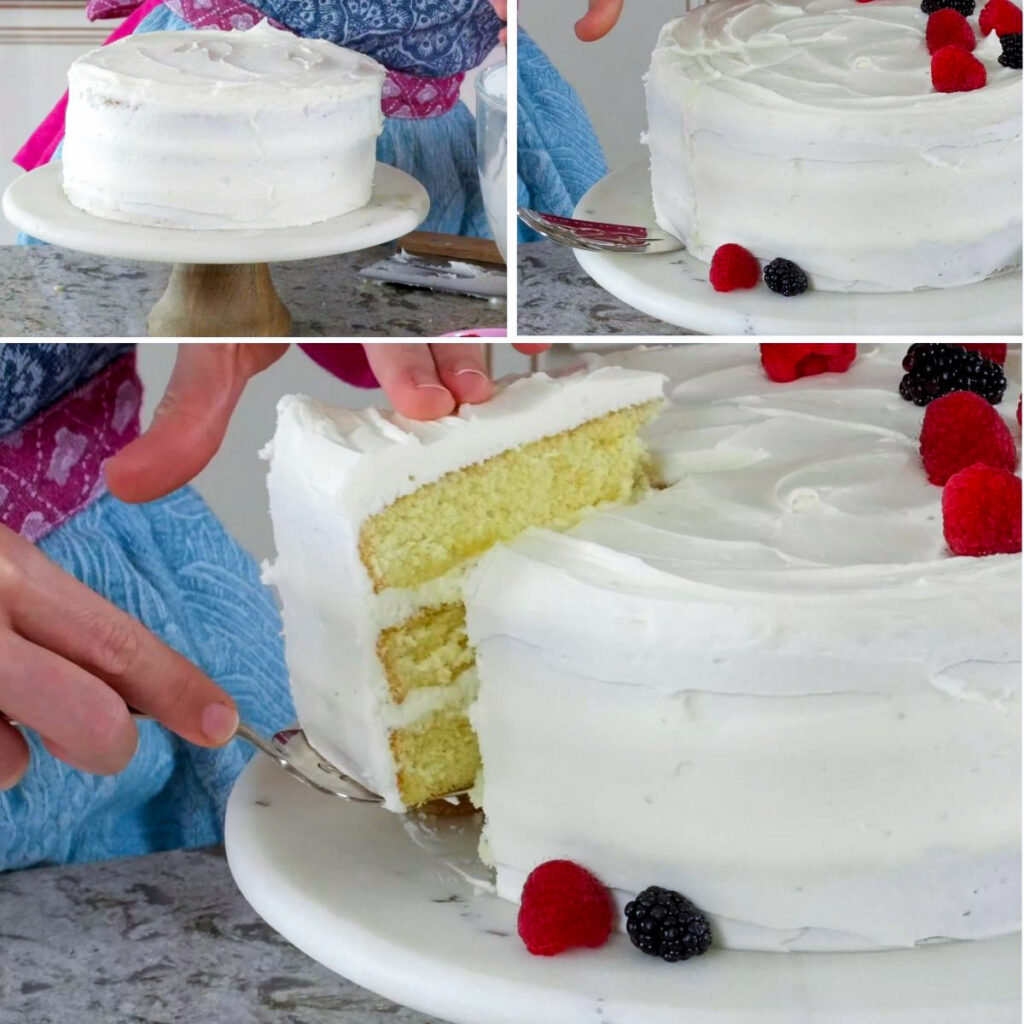
Tips on Making Vanilla Cake
I’ve picked up a few tricks—sometimes the hard way—that can really make a difference when baking the best vanilla cake.
Flour
Be spot on with how you measure your flour to dodge a dry and crumbly disaster. Spoon and level it, or even better, weigh it for precision.
While a homemade cake flour mix might seem like a quick fix, I’ve found that it doesn’t quite deliver the same fluffy texture in this recipe. Stick with store-bought cake flour. It’s a staple in my pantry for a reason.
Eggs
You’ll need 3 whole eggs and 2 extra egg whites. This combo gives the cake its structure and keeps it light and airy. I’ve tried using 4 whole eggs before, and the result wasn’t as satisfying.
Buttermilk
Don’t fret if you don’t have any. Just mix 2 teaspoons of white vinegar or lemon juice with enough whole milk to make 1 and ½ cups. Let it sit for about 5 minutes to thicken up slightly.
Although you can use lower-fat or non-dairy milk, they don’t quite bring the same richness as the full-fat version.
Layering
Patience is key when cooling your cake layers. I once rushed the process and slapped the frosting on semi-warm layers, which turned into a frosted flop. Make sure your layers are completely cool, even if that means popping them in the fridge or freezer for a bit.
Making In Advance
Both the cake layers and the frosting can be prepped ahead. Store the layers at room temperature and overnight the frosting in the fridge. If they’ve been frozen, thaw them in the fridge first and then let them rest at room temperature before you get down to assembling and decorating.
Any leftover cake should be covered tightly and can be kept in the fridge for up to 5 days.
Some Creative Modifications
Mix about ¾ cup of sprinkles into your batter for a cheerful twist, but steer clear of nonpareils as they bleed color.
Got a Bundt pan? This batter will nicely fill a 10-12 cup size. Fill your liners ⅔ full and bake at 350°F for 20 minutes. You’ll get about three dozen. Want a dedicated recipe? Hop over to my go-to gluten-free vanilla cupcake guide.
Frequently Asked Questions
Why Must Everything Be at Room Temperature?
It’s for the smooth and even mix of your cake batter. Ingredients like butter and eggs blend more uniformly when they’re not too cold. It helps in achieving a consistent texture in your baked goods.
What Can Replace Cake Flour If It Isn’t Around?
You can substitute all-purpose flour. For every cup of all-purpose flour needed, remove 2 tablespoons of the flour and replace them with 2 tablespoons of cornstarch. Finally, sift the mix several times. This closely mimics the lighter and softer texture provided by the lower protein content of cake flour.
Are There Any Healthier Alternatives to Sugar for the Cake Recipe?
Yes, you can go for healthier alternatives like honey, maple syrup, or agave nectar. Be mindful that these sweeteners can impact the texture and consistency of the cake.
Typically, use a ratio of ¾ cup of liquid sweetener for every 1 cup of sugar. Also, adjust other liquid quantities in the recipe accordingly to maintain balance.
Good luck, and enjoy every delicious bite!
Discover More Unique Cake Recipes:
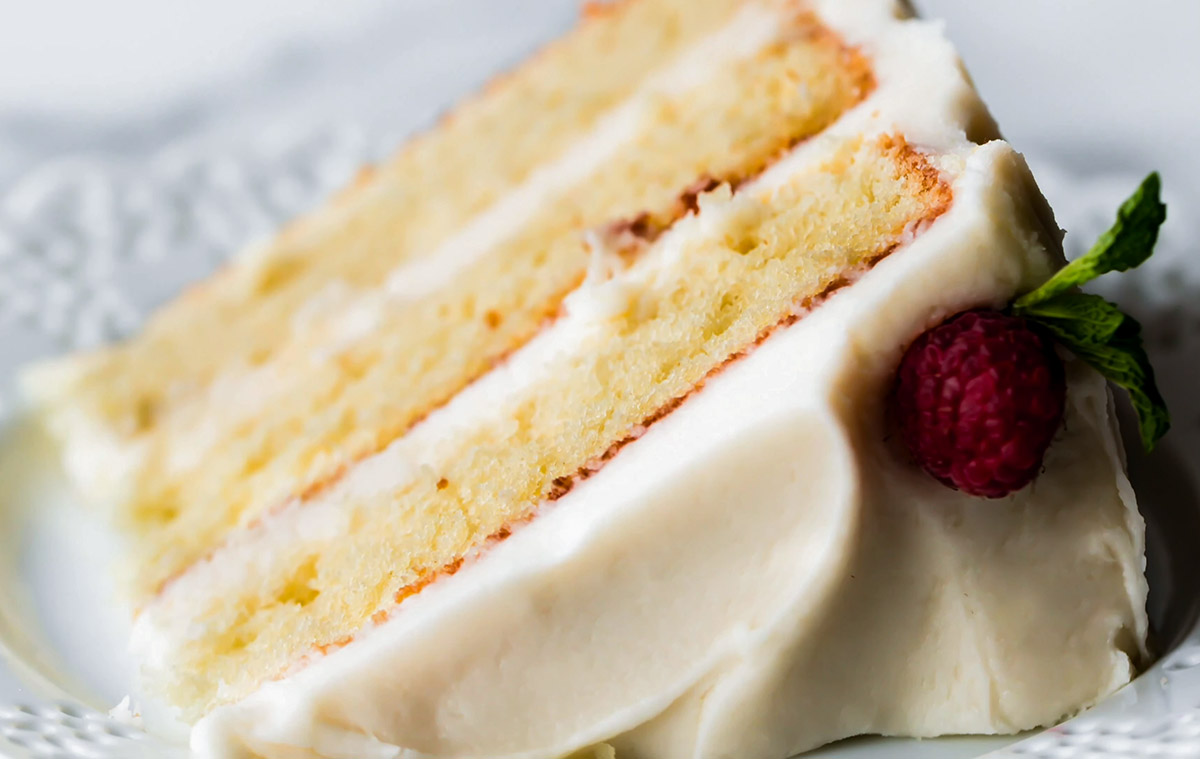
Vanilla Cake
Ingredients
Base
- 3⅔ cups cake flour
- 1 tsp salt
- 2 ⅓ tsp baking powder
- 1 tsp baking soda
- 1½ cups unsalted butter, room temperature
- 2 cups granulated sugar
- 3 eggs, large
- 2 egg whites
- 1 tbsp pure vanilla extract
- 1½ cups buttermilk, room temperature
Vanilla Buttercream
- 1½ cups unsalted butter, softened
- 5½ cups confectioners’ sugar
- ⅓ cup whole milk or heavy cream
- 1 ⅔ tsp pure vanilla extract
- A pinch of salt
Instructions
- Set the oven to 350°F (177°C). Grease and line three 9-inch cake pans with parchment paper.
- In a bowl, combine baking soda, baking powder, salt, and cake flour, salt.
- In a mixer, beat sugar and butter at high speed until smooth (about 3 minutes). Scrape down sides occasionally.
- Continue mixing, adding 3 whole eggs, 2 egg whites, and vanilla. Mix until combined.
- At low speed, gradually add dry ingredients, then buttermilk, mixing until it is just combined. Stir by hand to eliminate lumps.
- Divide the batter evenly between the pans and bake for 25 minutes. Cool the pans on a wire rack.
- Beat butter until creamy. Gradually add confectioners’ sugar, milk, vanilla, and salt, and beat until smooth. Adjust consistency if necessary.
- Level cake layers using a serrated knife. Layer cakes with frosting, covering each top and sides.
- Refrigerate the assembled cake for at least an hour before serving.
Notes
- Flour: Measure precisely by spooning and leveling or weighing.
- Eggs: Use 3 whole eggs and 2 egg whites for best texture.
- Buttermilk: Substitute with a mix of vinegar and whole milk if necessary.
- Cooling: Ensure layers are completely cool before frosting.
- Advance Preparation: Make layers and frosting ahead; store accordingly.
- Variations: Add sprinkles to batter or adapt to bake as cupcakes.
- Storage: Keep leftover cake covered in the fridge for up to 5 days.
